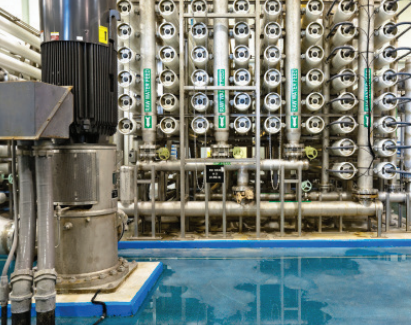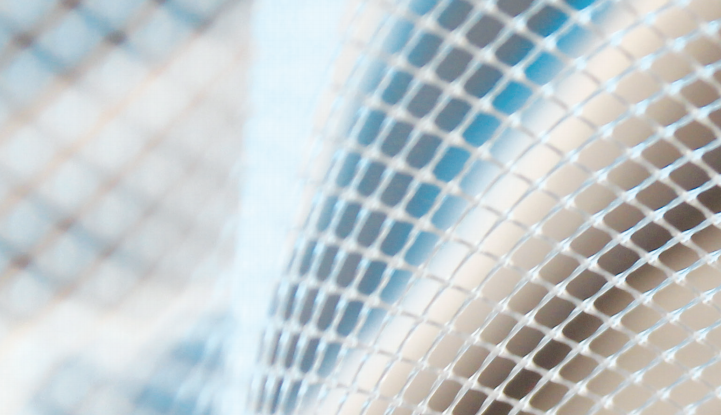 Water: Without interference by humans, it’s meant to be a pure substance that makes up around 70 percent of the Earth, with most of it contained in the oceans. We enjoy the beauty of water in many different states, from cascading waterfalls to the still pond that allows us to skip stones—to a fun family day at the beach or out fishing for flounder in a bay or on the ocean in our boat. While that may all seem fairly simple, sustenance is the biggest priority regarding our relationship with water, and that’s a very complex subject. Water—and our need for it—is also big business around the world regarding numerous processes and methods for working to make it accessible to everyone, as well as filtering and purifying, so that we don’t get sick from the very thing that is ultimately supposed to act as our life force.
Water: Without interference by humans, it’s meant to be a pure substance that makes up around 70 percent of the Earth, with most of it contained in the oceans. We enjoy the beauty of water in many different states, from cascading waterfalls to the still pond that allows us to skip stones—to a fun family day at the beach or out fishing for flounder in a bay or on the ocean in our boat. While that may all seem fairly simple, sustenance is the biggest priority regarding our relationship with water, and that’s a very complex subject. Water—and our need for it—is also big business around the world regarding numerous processes and methods for working to make it accessible to everyone, as well as filtering and purifying, so that we don’t get sick from the very thing that is ultimately supposed to act as our life force.
Companies such as Conwed, headquartered in Minneapolis, are dedicated to providing very necessary components to the water filtration and reverse osmosis (RO) industry. They are also known as pioneers in the use of 3D printing for items like their feed spacers—parts which serve to allow for uniform water flow in membranes for complex structures like spiral-wound reverse osmosis (RO) and nanofiltration (NF) membrane systems.
 Conwed’s specialty though is in manufacturing and selling plastic netting around the world. Recently, this global industry leader also helped with a water research study by providing their 3D printed spacers for research comparison.
Conwed’s specialty though is in manufacturing and selling plastic netting around the world. Recently, this global industry leader also helped with a water research study by providing their 3D printed spacers for research comparison.
The study, led by researchers from both Saudi Arabia and the Netherlands, was the subject of a recently published paper, ‘Development and characterization of 3D-printed feed spacers for spiral wound membrane systems.’ found in Water Research 91 (2016) 55-67, and authored by Amber Siddiqui, Nadia Farhat, Szilárd S. Bucs, Rodrigo Valladares Linares, Cristian Picioreanu, Joop C. Kruithof, Mark C.M. van Loosdrecht. James Kidwell, and Johannes S. Vrouwenvelder.
The study offers a new strategy for dealing with biofouling, an issue which spans numerous sectors where components are subjected to ongoing exposure to water and therefore suffer performance issues due to accumulation of microorganisms, plants, or animals on their surfaces. The objective of this particular study was to develop, characterize, and test feed spacers with numerical modeling, 3D printing, and experimental membrane fouling simulator (MFS) studies.
The topic and impending research were sparked off by the idea that indeed hydrodynamics and biofouling issues could be improved on with better feed spacers. Due to the efforts Conwed is famous for within the RO industry, as well as being known for manufacturing a full line of diverse RO feed spacers, they were asked to collaborate with the researchers. Conwed has a deep commitment to not only providing desalination materials, but also finding ways to improve the corresponding systems.
 Due to their use of 3D printing, Conwed is known as an innovator within their industry. They’ve experimented with 3D printed spacers on a small scale so far, but this has allowed for much more expedient research and development of new designs that simulate conditions that would actually be found in desalination facilities. With 3D printing, they’ve been working with a range of scientists to see how they can impact issues of:
Due to their use of 3D printing, Conwed is known as an innovator within their industry. They’ve experimented with 3D printed spacers on a small scale so far, but this has allowed for much more expedient research and development of new designs that simulate conditions that would actually be found in desalination facilities. With 3D printing, they’ve been working with a range of scientists to see how they can impact issues of:
- Biofouling
- Membrane damage
- Pressure drop
“Our R&D and engineering teams have explored 3D technologies for a few years now. We pioneered the use of 3D technology in feed spacers to test new geometries and designs because we knew it would be an alternative to speed up the process from design creation to actual performance testing replicating live conditions in real RO systems,” said Ivan Soltero, Sr. Strategic Marketing Manager at Conwed. “We are proactively looking for alternatives to impact water desalination systems from a feed spacer perspective.”
Use of Conwed’s 3D printed feed spacers was crucial to the study by researchers as they were comparing both 3D printed and commercial feed spacers with both identical and different geometries. It’s also interesting to note that the Conwed team had already observed differences in performance when spacer specifications like width, angle, and chemical makeup were modified.
“A good agreement was found for the modeled and measured relationship between linear flow velocity and pressure drop for feed spacers with the same geometry, indicating that modeling can serve as the first step in spacer characterization,” stated the team in their research study.
The current joint research encompasses numerical modeling as well as a number of experimental readings that are relevant to both hydraulics and biofouling.
“These types of research studies help us understand how our next-generation feed spacers could impact biofouling, membrane damage and pressure drop, the three main challenges in every RO system. We truly believe the next wave of innovation in the desalination industry will come from the feed spacer,” said Soltero.
In using a feed spacer that was modified with a low pressure drop, and 3D printed, the researchers found that when compared to a traditional part, it offered a lower pressure drop during hydrodynamic testing, as well as offering a lower drop increase in time with the same biomass. Their conclusion with the comparison that with these modified, 3D printed spacers, the new geometries could help improve membrane performance.
“The combination of numerical modeling of feed spacers and experimental testing of 3D printed feed spacers is a promising strategy (rapid, low cost and representative) to develop advanced feed spacers aiming to reduce the impact of biofilm formation on membrane performance and to improve the cleanability of spiral-wound NF and RO membrane systems,” stated the researchers in further conclusion.
 It’s also thought that this strategy outlined in their research may help for forward osmosis systems, reverse electrodialysis, membrane distillation, and electrodeionisation membrane systems also.
It’s also thought that this strategy outlined in their research may help for forward osmosis systems, reverse electrodialysis, membrane distillation, and electrodeionisation membrane systems also.
This study marks another way that 3D printing is offering improvements to various elements of water systems. We’ve followed 3D topics within the water industry on numerous different levels, from large companies using 3D scanning to assess corrosion levels to other organizations researching 3D printing to streamline water technology altogether. From innovative manual water pumps to 3D printed components for groundbreaking water filters, this new technology is being used in combination with water for a host of reasons, all employing the benefits of 3D printing, beginning with customization and material use options, as well as speed in production, and very importantly—greater affordability, making it easier to effect changes around the world, and especially in places where individuals do not have clean drinking water.
How do you think these new parts will help the water industry? Discuss in the 3D Printed Feed Spacers forum over at 3DPB.com.
[Source: Water World]Subscribe to Our Email Newsletter
Stay up-to-date on all the latest news from the 3D printing industry and receive information and offers from third party vendors.
You May Also Like
Nylon 3D Printed Parts Made More Functional with Coatings & Colors
Parts 3D printed from polyamide (PA, Nylon) 12 using powder bed fusion (PBF) are a mainstay in the additive manufacturing (AM) industry. While post-finishing processes have improved the porosity of...
3DPOD Episode 193: Flow and What’s Possible in 3D Printing with Ricky Wildman, University of Nottingham
Ricky Wildman is working on 3D printing pills, but, as Professor of Multiphase Flow and Physics at Nottingham, he does a whole lot more. His research encompasses the characterization of...
3D Printing Webinar and Event Roundup: March 17, 2024
It’s another busy week of webinars and events, including SALMED 2024 and AM Forum in Berlin. Stratasys continues its in-person training and is offering two webinars, ASTM is holding a...
3D Printed Micro Antenna is 15% Smaller and 6X Lighter
Horizon Microtechnologies has achieved success in creating a high-frequency D-Band horn antenna through micro 3D printing. However, this achievement did not rely solely on 3D printing; it involved a combination...






























